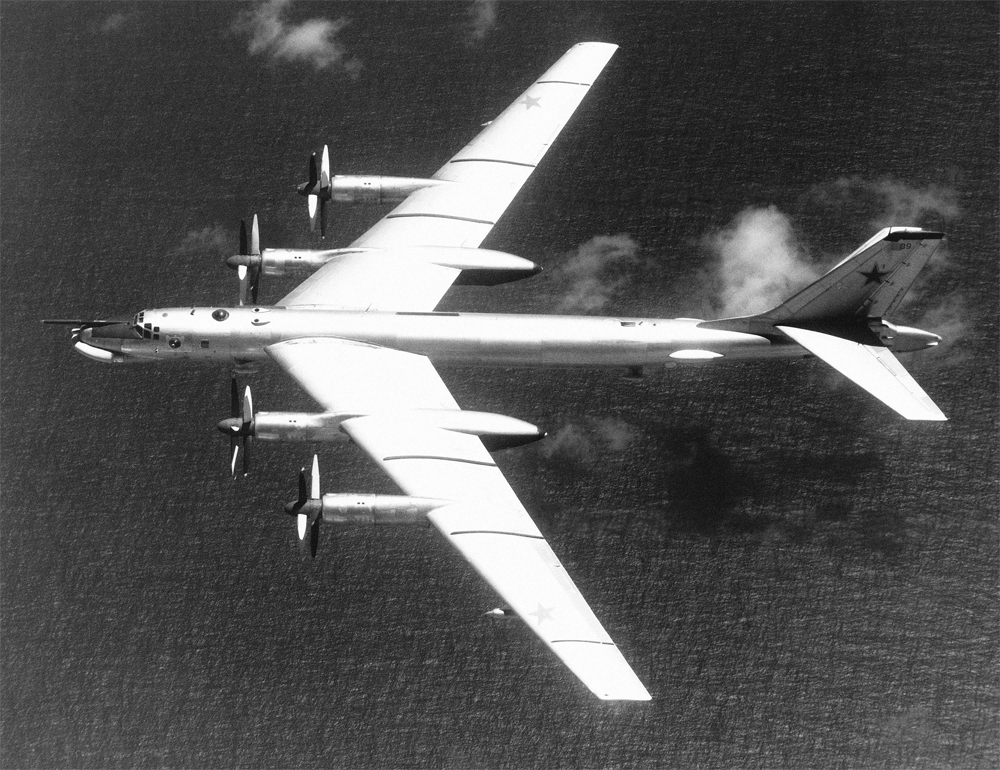NEWSWATCH: How to spot a Russian bomber

[“How to spot a Russian bomber” – BBC – February 20, 2015]
The BBC covers recent incursions by Russian bombers into UK’s area of interest, including information on how to recognize Russian bombers.
Two Russian bombers have been escorted from near UK territory – the latest in a series of similar incidents. How easy is it to spot a Russian plane, asks Jon Kelly.
The Ministry of Defence insists that the Russian aircraft did not enter British airspace, which extends 12 nautical miles from the nation’s coast. But it says they were inside the UK’s “area of interest”, and the RAF scrambled Typhoon jets to intercept them. If the MoD’s account is accurate, they may have been flying too far away for ordinary plane spotters to detect them – although a woman in Cornwall claims she saw them flying inland.
The most recent incursions were by TU-95 MS bombers, referred to by NATO parlance as the Bear-H. It is recognizable by four turboprops, set-back wings and an enormous amount of noise.
Each was a Tu-95 MS, also known by its Nato reporting name “Bear-H”, a four-engine long-range bomber, equipped with turboprop-driven propellers and set-back wings that give it an unmistakable silhouette.
* * *
The most noticeable thing about the Bear, the earliest iteration of which entered service in 1956, is the almighty racket it makes. Its contra-rotating propellers spin faster than the speed of sound, creating their own sonic boom, making it one of “the loudest combat aircraft ever built”, says Justin Bronk of the Royal United Services Institute. …
Click here for “How to spot a Russian bomber,” including graphics and photos
[featured image on this post is file photo of TU-95 Bear-G]
